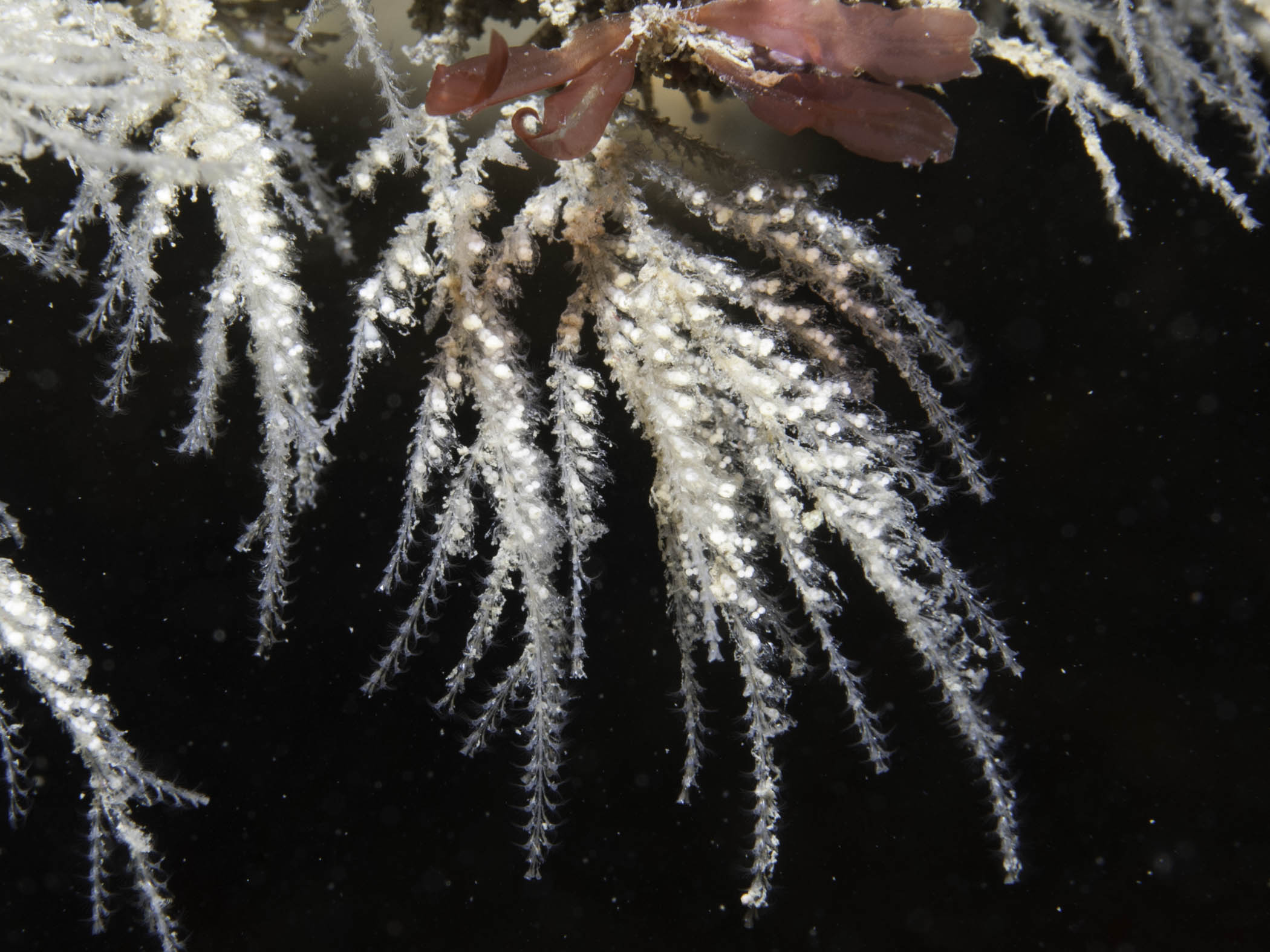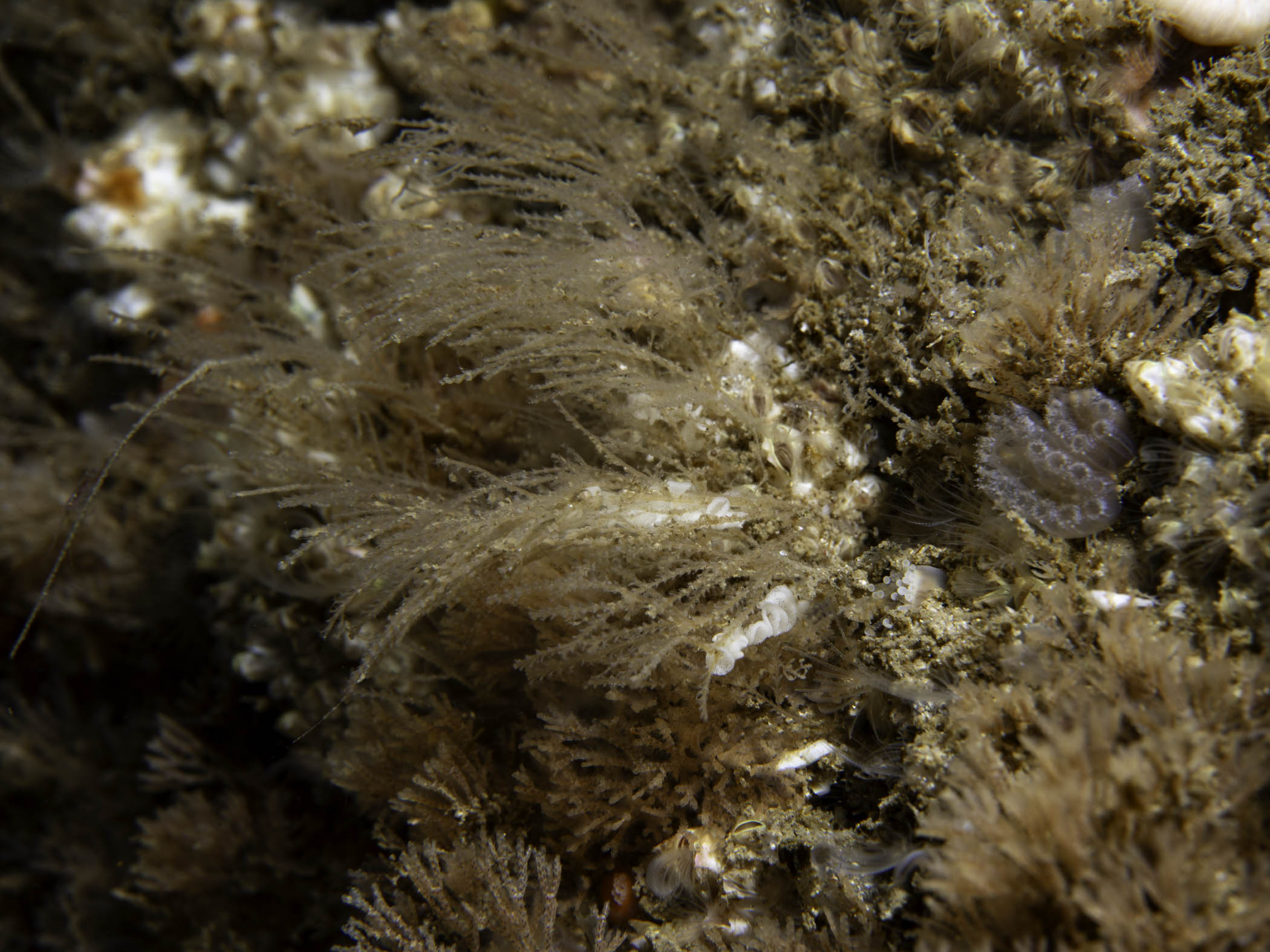| CNIDARIA : Leptothecata : Sertulariidae | SEA ANEMONES AND HYDROIDS |
Diphasia rosacea (Linnaeus, 1758)
 |
| Diphasia rosacea |
Description: This hydroid is found as clusters of pinnate colonies with the main stem usually slightly curved and with alternately arranged side branches. The hydrothecae are long and tubular and are arranged in opposite pairs. They are attached to the side branches for approximately 1/2 of their length. There is a single opercular flap attached to the inner margin. The gonothecae are relatively large and are arranged on short pedicels. The male capsule is elongate, and tapers towards the base. There are four thick spines that surround the males raised aperture. The female gonotheca is more ovate in shape and four long, leaf-like processes surround the aperture. Typically individual fronds are 40mm in length.
Habitat: This hydroid grows on steep rocky surfaces and sometimes on other hydroids such as Tubularia indivisa. It has a wide distribution in the British Isles and is the most common Diphasia species.
Distribution: This is one of the smaller Diphasia species and should be compared with Diphasia attenuata and Diphasia fallax.
Distribution Map from NBN: Diphasia rosacea at National Biodiversity Network mapping facility, data for UK.
iNaturalist: Diphasia rosacea at iNaturalist World Species Observations database.
GBIF data for Diphasia rosacea
WoRMS: Diphasia rosacea at World Register of Marine Species. Accepted name: Diphasia rosacea (Linnaeus, 1758). AphiaID: 117883.
Classification: Biota; Animalia; Cnidaria; Medusozoa; Hydrozoa; Hydroidolina; Leptothecata; Sertularioidea; Sertulariidae; Diphasia
| Previous species | Next species |
| Picton, B.E. & Morrow, C.C. (2024). Diphasia rosacea. (Linnaeus, 1758). [In] Encyclopedia of Marine Life of Britain and Ireland. https://www2.habitas.org.uk/marbiop-ni/speciesaccounts.php?item=D6430. Accessed on 2025-04-10 |
